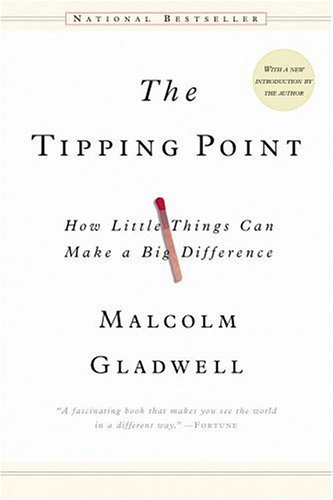Whether you are planning a new product launch, forming a new team or planning a new strategy, there are two key challenges. The first is to decide what to do and the second is to make it happen. A whole science and business has grown up around the issue of Change Management with different theories and practices. If you are planning a workshop on introducing change, I’d recommend Malcolm Gladwell’s book “The Tipping Point” as a good source of inspiration.
Some writers on change management see change as a bell curve, with slow introduction, a peak of attention and slow reduction in effectiveness. Gladwell”s theory is that change happens slowly and with difficulty at first, but a critical mass can be achieved, the Tipping Point, where an idea takes off and becomes self-sustaining.
The book has lots of anecdotes about successful change, ranging from training shoe brand development to American revolutionaries being galvanised to fight the English with the cry of “the British are coming!” The stories are used to illustrate important factors that move an idea up the hard slope to the Tipping Point, including which kind of people you need, ways of making ideas “sticky” and the power of context.
My favourite among them is the discussion of a psychological experiment in the use of fear in motivation. Yale students were given booklets about the risk of tetanus with an offer of free innoculation on-campus. Some got a “fear booklet” with dramatic language and shocking photographs, and others a “non-fear booklet” using more measured language. Sure enough, the “fear” students were more likely to express intention to get innoculated than the “non-fear” students. But after one month only 3% of the whole group had actually visited the health centre and got inoculated. The exercise was repeated including a map of the campus marking the health centre and showing opening times. The innoculation rate shot up to 28% with no marked difference between the fear and non-fear groups. Gladwell’s conclusion is that the difference between intention to change and action was bridged by combining an abstract “out there” idea of tetanus risk with a personal “in my life” practical message. The combination of abstract and practical makes the change stick(y).
Of course, whilst Gladwell identifies these important factors for making change stick(y), he can’t tell you how to apply the idea in your project. But the identification of these factors is a great place to start in your workshop planning change.
What will make your change stick(y)?
Would you like to explore this idea further? Get in touch!


